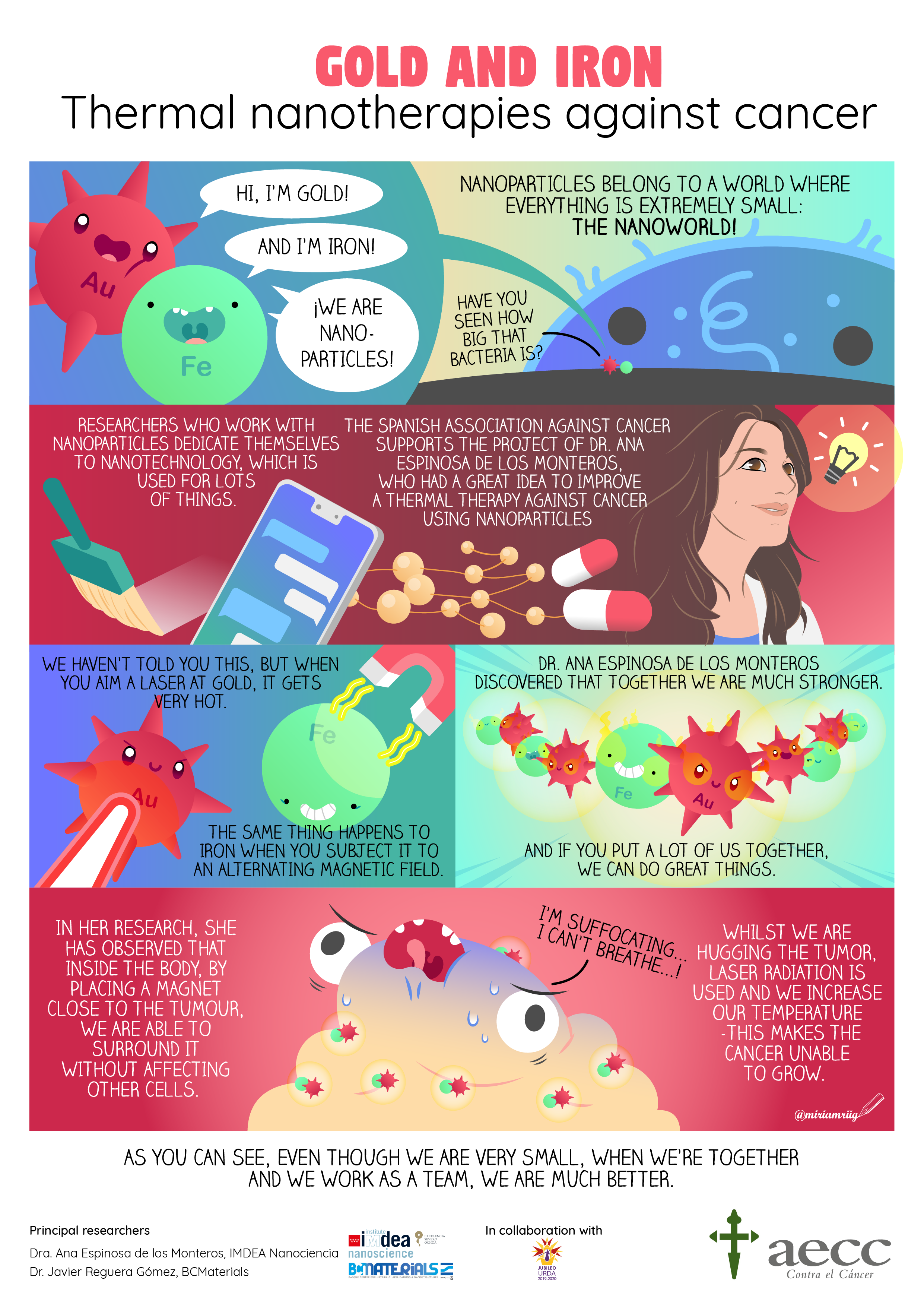A combination of nanoparticles prevents cancer growth
25.06.2020
Nanotechnology is an innovative tool that will permit the improvement of cancer treatment. Despite appearing to be taken from science fiction, it is based on the development of nanoparticles or nanomachines, extremely small structures that have the capacity to enter tumour cells. One of the main approaches to nanoparticles is to use them as vehicles to transport and release drugs specifically into tumours, thus avoiding damage to other healthy cells in the body, a common side effect of chemotherapy.
Dr. Ana Espinosa de los Monteros of IMDEA Nanociencia, together with a team of national and international researchers, has recently published a study in which they have fused two types of nanoparticles: a gold and an iron oxide nanoparticle, which together have shown a great capacity to prevent the growth of a tumour.
This new combination of nanoparticles permits the generation of high temperatures from magnetic properties (magnetothermia) and by infrared radiation (photothermia), which is harmful to a cell's biology. Although these properties have been shown to be effective separately, researchers have now proved that their combination is much more efficient in reducing the growth of a tumour (magneto-phototermia).
In addition to the powerful combination of gold and iron-based nanoparticles, researchers have seen that applying a magnetic field to cell cultures improves the ability of nanoparticles to enter tumour cells. They has also been tested in animal models by introducing the nanoparticles intravenously and exposing the mice to a magnetic field for 24 hours which made the nanoparticles position themselves around the tumour ''embracing'' it and 15 minutes of laser radiation which ''activated'' them by increasing their temperature. As a result, they achieved a therapeutic effect, completely inhibiting the growth of the tumour.
The study, carried out at IMDEA Nanociencia in collaboration with other prestigious centres and promoted by the Spanish Association Against Cancer (AECC), shows that this innovative therapy, thanks to technological advances, could become a new option for treating cancer.
This work has been carried out together with Dr. Javier Reguera (BCMaterials centre, Bilbao) and in collaboration with experts from different research centres: Prof. Claire Wilhelm, Dr. Van de Walle, Dr. Alberto Curcio (Université de Paris, Paris), Prof. Luis Liz-Marzan, Dr. Christian Kuttner (CICBiomagune, Donosti) and Dr. Álvaro Muñoz-Noval (Universidad Complutense de Madrid). The work has been partially funded by the Community of Madrid's Talent Attraction Programme and by the "Severo Ochoa" R&D Centres of Excellence Program awarded to IMDEA Nanociencia.
Ana Espinosa is a researcher at IMDEA Nanociencia, the beneficiary of a project for Talent Attraction of the Community of Madrid and of the Ideas Semilla grant from the Spanish Association Against Cancer (AECC) for the study of thermal nanotherapies.
Reference
Ana Espinosa, Javier Reguera, et al. Janus Magnetic‐Plasmonic Nanoparticles for Magnetically Guided and Thermally Activated Cancer Therapy. Small 16, 1904960 (2020).
https://onlinelibrary.wiley.com/doi/abs/10.1002/smll.201904960
Contact
Ana Espinosa
ana.espinosa [at]imdea.org
WoS Researcher ID: G-9162-2011
SCOPUS Author ID: 35835194400
Twitter: @anaespmr
IMDEA Nanociencia Outreach Office
This email address is being protected from spambots. You need JavaScript enabled to view it.
+34 912998712
Twitter: @imdea_nano
Facebook: @imdeananociencia
Instagram: @imdeananociencia
Source: Asociación Española Contra el Cáncer (AECC)





